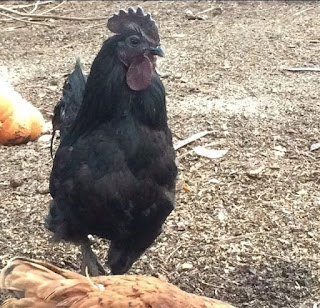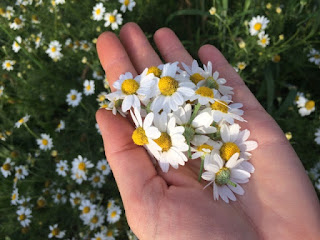It’s nice to see modern research catching
up with ancient knowledge. We are re-learning that fermenting food is the best
way to maintain proper gut bacteria populations, and therefore keep our immune
systems functioning at optimum levels. One of the best sources of beneficial
bacteria is also the easiest to make- good old fashioned sauerkraut! You can make it one head at a time, in one
quart jar, or make it by the bucketful using a pile of cabbages. If you use a
few purple cabbages in your mix, your kraut will turn bright magenta when it’s
ready to eat!
1. Chop Cabbage. Start by removing
wrapper leaves, browned edges, and blemishes. Give it a good rinse. Then
quarter it so you have a wedge of stem in each slice. Slice out the wedge from
each quarter. Chop cabbage into fine shreds with a good chef's knife, or run
through a food processor. Toss shreds into a big wide bowl.
2. Add Salt. 1 tablespoon to 1 average
cabbage. For a bigger head, add another teaspoon, or for a jumbo head, another
tablespoon. Do not use salt with iodine or anti-caking agent as it will hinder
bacterial growth. I use natural salts which are full of trace minerals.
3. Mix. With clean hands, dig, toss,
mix, and distribute the salt all through the cabbage. After you get it all
tossed and mixed, let the kraut sit for a few minutes so the salt begins to
pull the water from the cabbage. Tip- Do not
disinfect your hands or use soap with lotions or perfumes. You don't want that
stuff in your food! Just use simple soap and water.
4. Pack. Start stuffing kraut into
clean jars or buckets. They can be sterilized, but they don't have to be. I
find the kraut is better if the containers are not sterile. Keep stuffing. I use wide mouth jars and use my
knuckles to keep pushing the kraut down. You keep stuffing until the juice and
kraut are both about two inches from the top of the jar. (prevents overflow)
Place a glass weight or clean flat quartz stone on top to keep kraut under
liquid. For buckets, find a sturdy plate that fits snugly inside the bucket,
place on top of kraut and press down firmly until plate is covered in liquid.
5. Adjustments. What you want is
very tightly packed kraut that is completely below the surface of the juice
that has been extracted from it. If you need more liquid, mix 3/4 teaspoon
salt per cup of water and add as needed.
6. Monitor. Cover containers and monitor for
3 or 4 days at around 67°F. Anything above 68° can start growing yeast, and
anything below 65° slows fermentation. I highly recommend airlock lids for
fermenting in jars, but I do just fine using canning lid flats. Just set a flat
on top of each jar. Do not leave a
tight lid on a jar for an extended period or the pressure of developing gasses
will break your jar! Several times daily, remove the flat and pack the kraut down
releasing bubbles. Then replace the flat. I would do the same if using
fermenting lids. For buckets, press down on the plate and remove any bits of cabbage
on top. Cover loosely with bucket lid. Do not ignore your ferment! Bubbles
expand your liquid and containers nearly full can overflow when you are not
looking!
7. Taste! After about three days,
taste your kraut. If it's rich and sweet, you're done! Store in the fridge or
cool cellar between 35° and 55°. As long as your ferment is alive, do not
seal your jars! If you use the plastic lids screwed on loosely, that works.
Remember to check occasionally to make sure the kraut stays below the juice.
Sauerkraut will keep like this for 3 or 4 months. Maybe as long as six months
under perfect conditions.
 If you like, we do also have eggs from our buckeye and RIR girls if you want to add a few of those for a great Easter egger mix. Many of these eggs will have Ameraucanas as their dads, so odds are about 50/50 that babies hatched from these eggs will still lay various shades of green/blue eggs as adults from the blue gene carried by their dad. The other half will lay varying shades of pinkish/tan.
If you like, we do also have eggs from our buckeye and RIR girls if you want to add a few of those for a great Easter egger mix. Many of these eggs will have Ameraucanas as their dads, so odds are about 50/50 that babies hatched from these eggs will still lay various shades of green/blue eggs as adults from the blue gene carried by their dad. The other half will lay varying shades of pinkish/tan. 






















